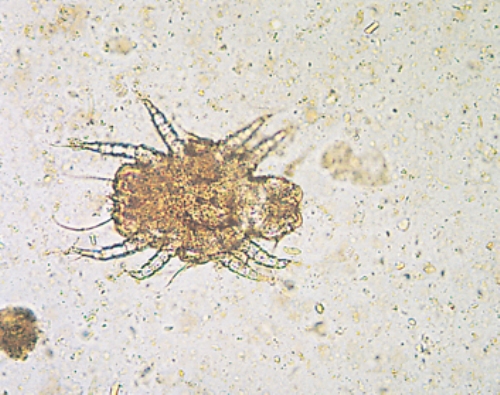Difference between revisions of "Small Mammals Q&A 13"
Jump to navigation
Jump to search
| Line 3: | Line 3: | ||
|- | |- | ||
| align="center" | [[File:Manson_logo.gif|90px|Mansonlogo]] | | align="center" | [[File:Manson_logo.gif|90px|Mansonlogo]] | ||
| − | | align="left" | This question was provided by [[:Category:Manson|Manson Publishing]] as part of the [[OVAL Project]]. See more [[Category: Small Mammals Q&A|Small Mammals questions]] | + | | align="left" | This question was provided by [[:Category:Manson|Manson Publishing]] as part of the [[OVAL Project]]. See more [[:Category: Small Mammals Q&A|Small Mammals questions]] |
|} | |} | ||
<br><br><br> | <br><br><br> | ||
Latest revision as of 14:57, 16 August 2011
| This question was provided by Manson Publishing as part of the OVAL Project. See more Small Mammals questions |
This rabbit has developed dandruff and is losing hair. On physical examination, reddened, hairless, scaly patches are noted over the head and back. On a faecal flotation, the organism shown was recovered.
| Question | Answer | Article | |
| What is this organism? | Cheyletiella parasitivorax. This organism is referred to as ‘walking dandruff’ and its presence in the fecal examination is simply fortuitous as a result of grooming.
Identify the mite by the large palpal claws on its anterior surface. It can often be seen grossly visible moving in the heavily scaled areas. Use clear cellophane tape to collect the mites from the fur and skin. Examine the tape microscopically. |
Link to Article | |
| How would you treat the condition? | Administer ivermectin for two to four doses or treat the rabbit by dusting with carbaryl or permethrin powder at weekly intervals. Alternatively, use lime/sulfur dips every two weeks for two to three treatments.
|
Link to Article | |
| How would you advise the owners? | C. parasitivorax survives in the environment longer than most mites. The premises remain a source of infection and should also be treated.
Flea elimination products, including dessicants that are safe for cats work well, but prolonged treatment may be necessary. Use these products cautiously, especially in debilitated or obese rabbits, as deaths have been reported. On occasion the mites affect humans and other animals. |
Link to Article | |
